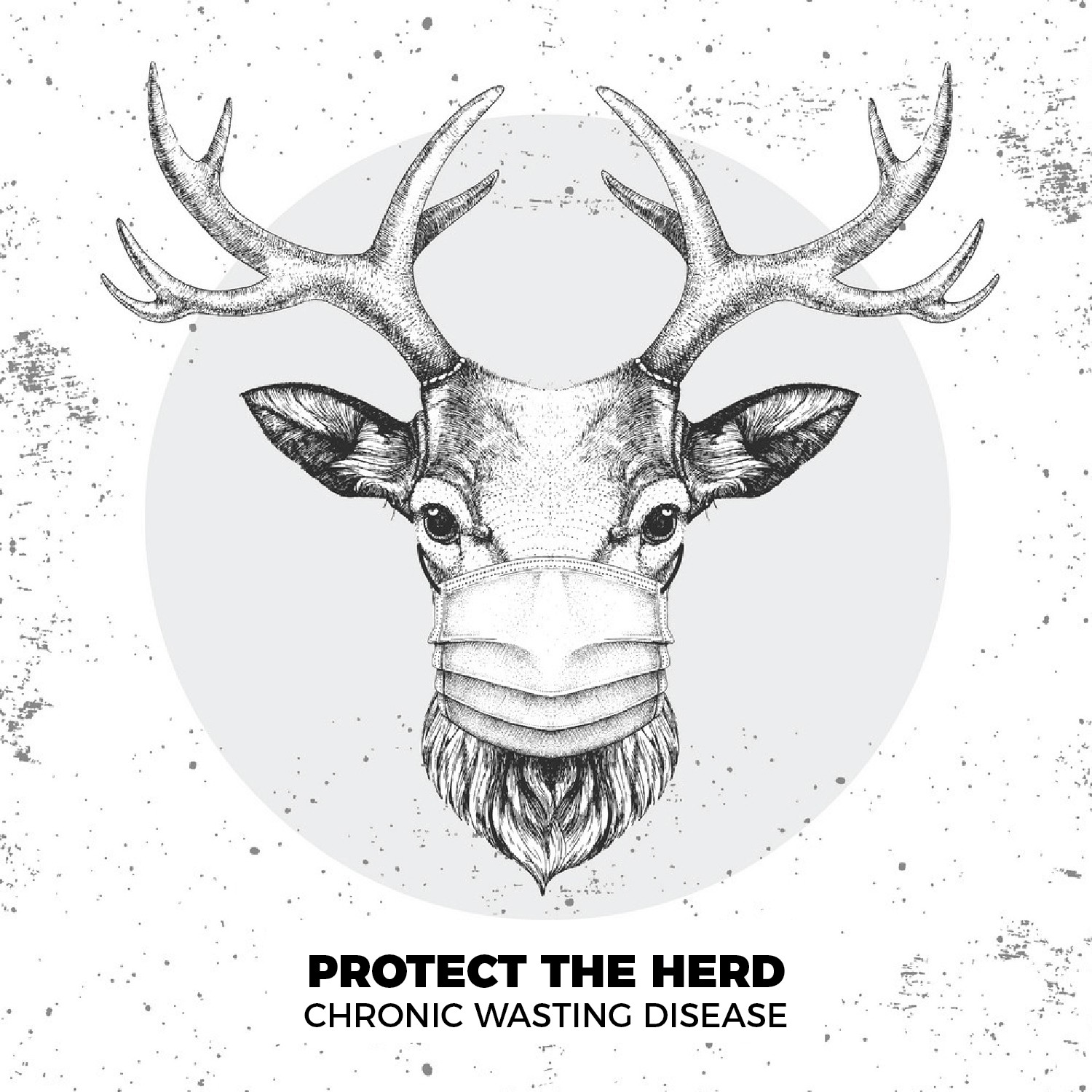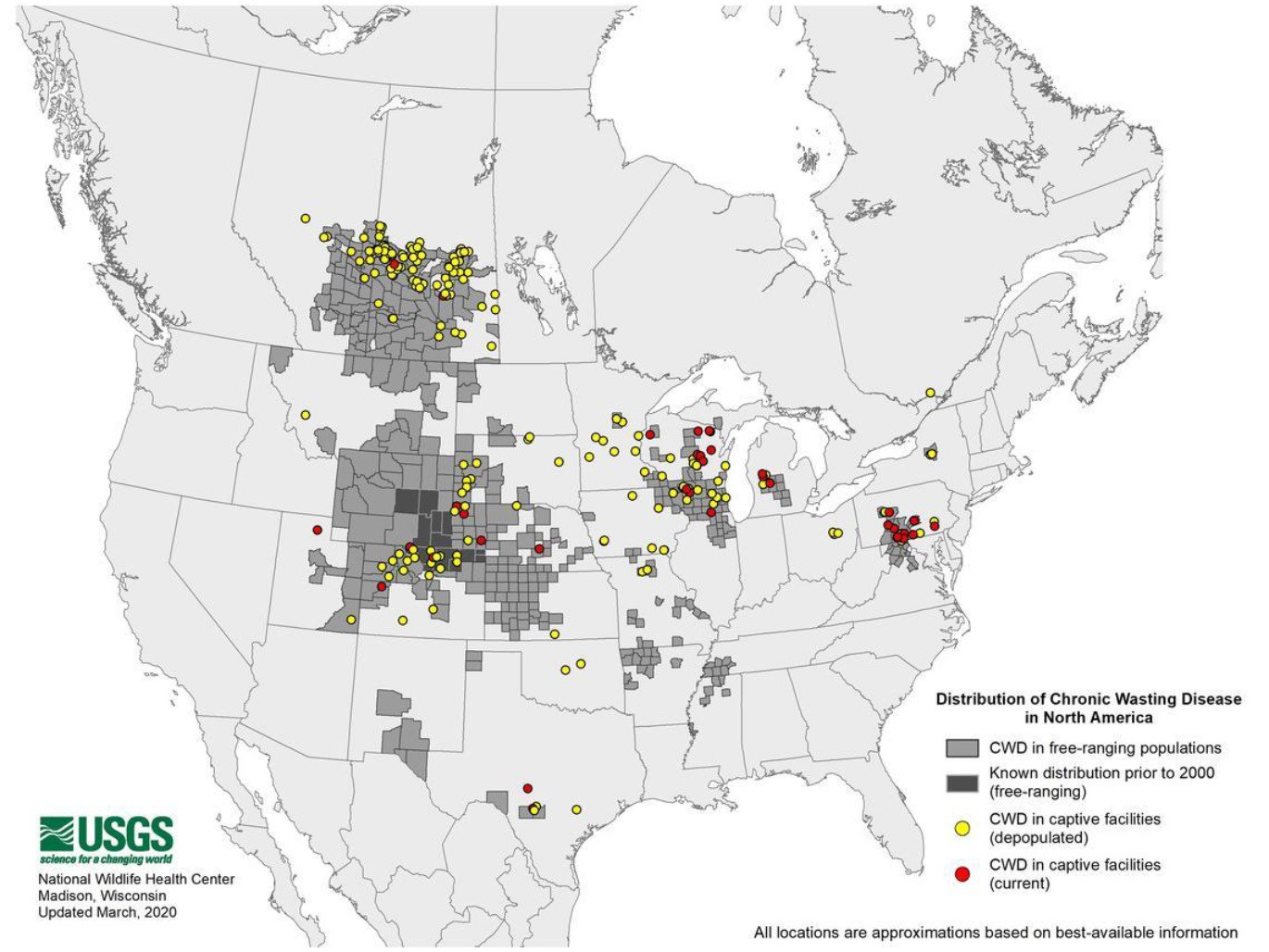
Over recent months, we have all been introduced to terms such as “social distancing” and “flattening the curve.” As we maneuver through the Covid-19 pandemic and become more educated about how the virus reacts and spreads, those simple things such as washing your hands and wearing a facemask have been critical actions taken to save lives. The Center for Disease Control (CDC) has provided us with a strategy to maintain overall health and reduce the risk of spreading the virus further. As the human race deals with this pandemic, the wild deer population is suffering from its own disease, Chronic Wasting Disease (CWD). As we recognize our responsibility to protect the wellbeing of ourselves and others during the Covid-19 pandemic, it will be the responsibility of landowners and hunters to take an active role in slowing the spread of CWD. The Department of Natural Resources (DNR), as well as the CDC, have provided a strategy to slow the spread of this disease as well.
What is Chronic Wasting Disease?
CWD is a neurological disease affecting primarily deer and elk. An abnormal protein, called a prion, attacks the brains of infected animals, causing them to lose weight, display strange behavior, and lose bodily functions. A deer with the disease can be asymptomatic for up to 3 years before finally showing clinical signs. Signs of CWD in deer include excessive salvation, thirst and urination, loss of appetite, weight loss, listlessness, and drooping ears and head. It is always fatal to the infected animal.
How can you help slow the spread of CWD?
1) Provide a sample of your harvest for testing.
Testing is key to tracking the disease. The DNR is actively monitoring and establishing Disease Management Zones (DMZ). If you hunt in or around an area with known positive cases of CWD, contact your local conservation officer to provide a sample of your harvest.
2) Refrain from using mineral or feed piles.
This disease is spread from deer to deer by both contact and contaminated feed. Supplemental feeding increases the risk of transmission by both contact and feed contamination.
3) Properly dispose of the carcass and remains.
Prions can remain infectious in the environment for years and are highly resistant to deactivation. The DNR recommends refraining from transporting a carcass from areas known to have positive cases of CWD. Please contact your local conservation officer for instructions on how to dispose of remains properly.
4) Report sick deer anywhere within known CWD zones.
Immediately contact local DNR to report a deer showing any symptoms previously described.

Center for Disease Control Recommendations:
Testing for the CWD protein is not a food safety test. Currently, it is not believed that humans can contract CWD by eating venison; however, the Center for Disease Control and Prevention recommends that when hunting in areas with CWD to strongly consider having the deer tested for CWD before you eat the meat. If your animal tests positive for CWD, do not eat that animal. For further recommendations, refer to the information provided by the Centers for Disease Control and Prevention.
https://www.iowadnr.gov/Hunting/Deer-Hunting/Deer-Disease-Information









